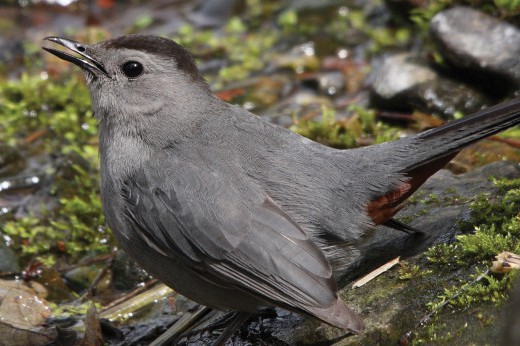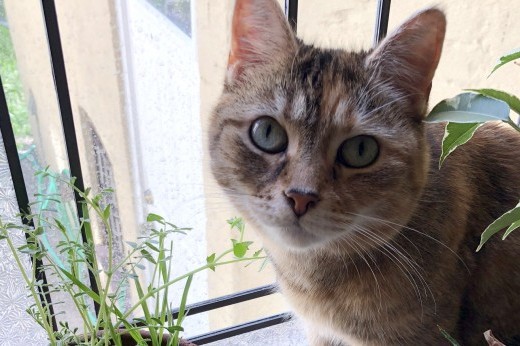The mourning dove (Zenaida macroura) gets its common name from the sad cooing sound that they sing. Hearing its throaty coo at dusk or early in the morning before sunrise has made some people confuse it with an owl. Mourning doves also produce twittering sounds with their wings, especially on takeoffs and in flight.
They are very fast fliers, making them a favorite game bird for hunters; each year in the U.S. over 20 million are harvested for food and sport. The mourning dove remains extremely common, however, with an estimated U.S. population of about 350 million, thanks to its habit of nesting three to five times a year and ability to thrive in human-altered environments. The bird can be found throughout the year in every continental U.S. state, and into Mexico and Central America.
The nest is a very flimsy affair usually found on a branch of a tree; other nest sites include gutters and eaves of buildings, or sometimes right on the ground. The male and female can be paired for life. The female usually lays two eggs and incubation, by both parents, lasts for 14 days. When the eggs hatch, the young are fed a special “milk” by both their parents that is actually regurgitated food mixed with cells from the parent’s crop. All doves and pigeons produce crop milk for their young. After a week or so the food is switched to seeds and other vegetative material. Hardly ever do mourning doves eat insects.
There is basically no difference between a dove and a pigeon except that pigeons are usually larger and doves are often brighter. The mourning dove is a gray brownish color with some black spots on its wings and white outside tail feathers. Some theorize that these help the bird evade predators who would go for the white tail feathers while the dove escapes with its life.
Mourning doves are ground feeders. They do not scratch for food like sparrows but instead just pick. To attract them to a feeder, simply throw some seeds, especially millet, on the ground. Be careful not to do this where cats could be a problem; cats and ground-feeding birds are not a good mix.
Doves have some biblical symbolism. In the story of the Great Flood, Noah sent out a dove to see if dry land could be found. The bird returned with an olive leaf in its beak—a sign that the waters had receded. The dove has endured as a symbol of hope and peace. For people in grief, seeing and hearing a mourning dove can be a sign of encouragement that all will be well.
The next time we see a mourning dove we should think of a fast flier, a prolific bird with symbolism, and, of course, a very interesting song.
The Birds of Brooklyn series looks at some of the most familiar and fascinating birds that call Kings County their habitat.





